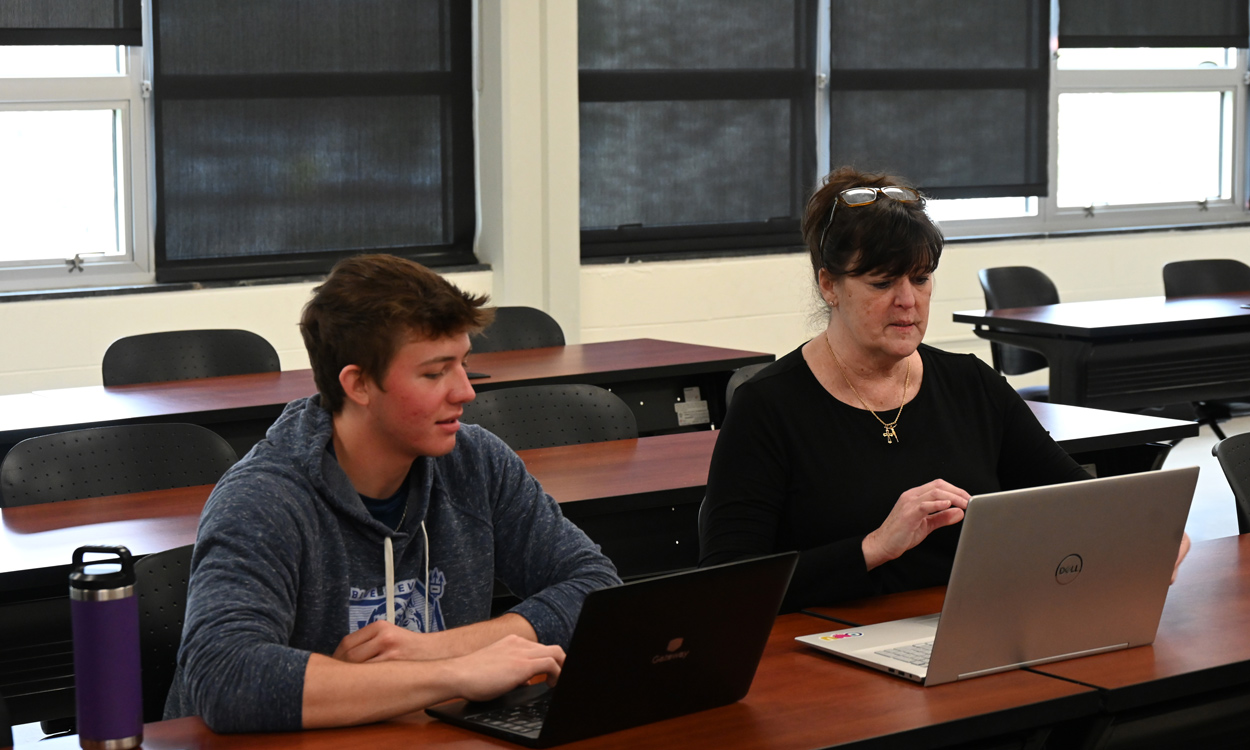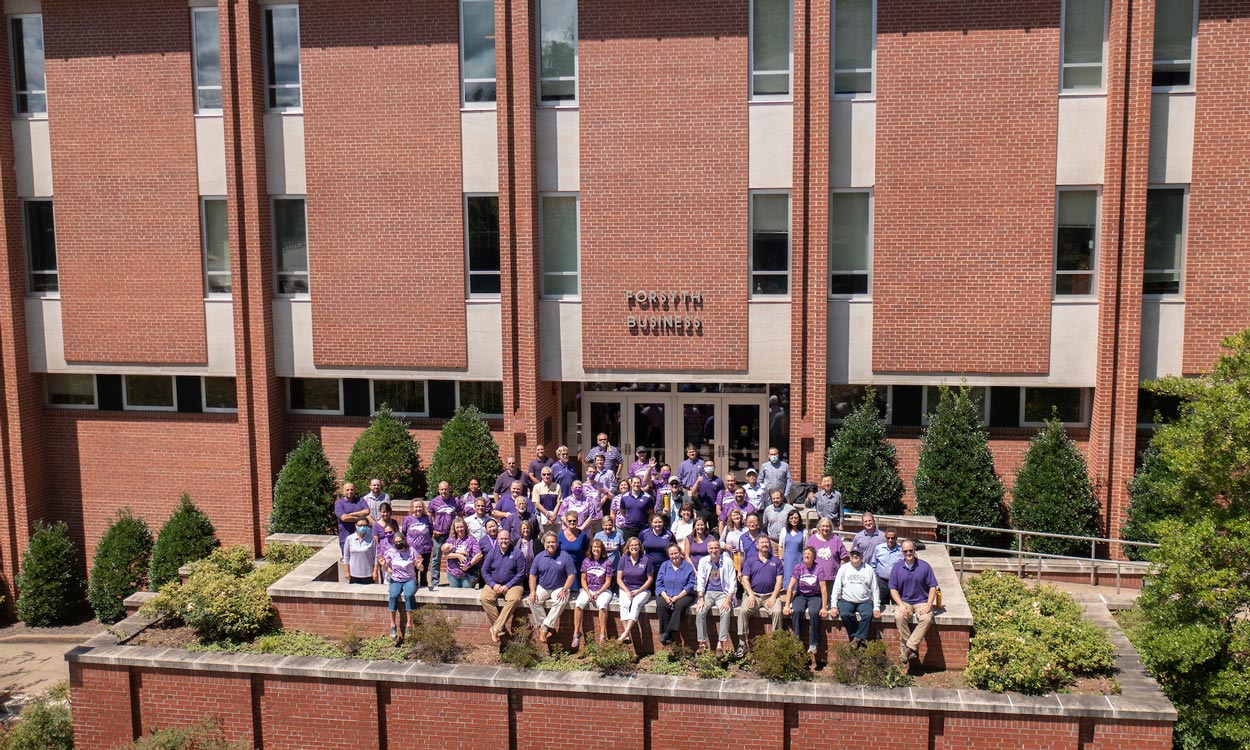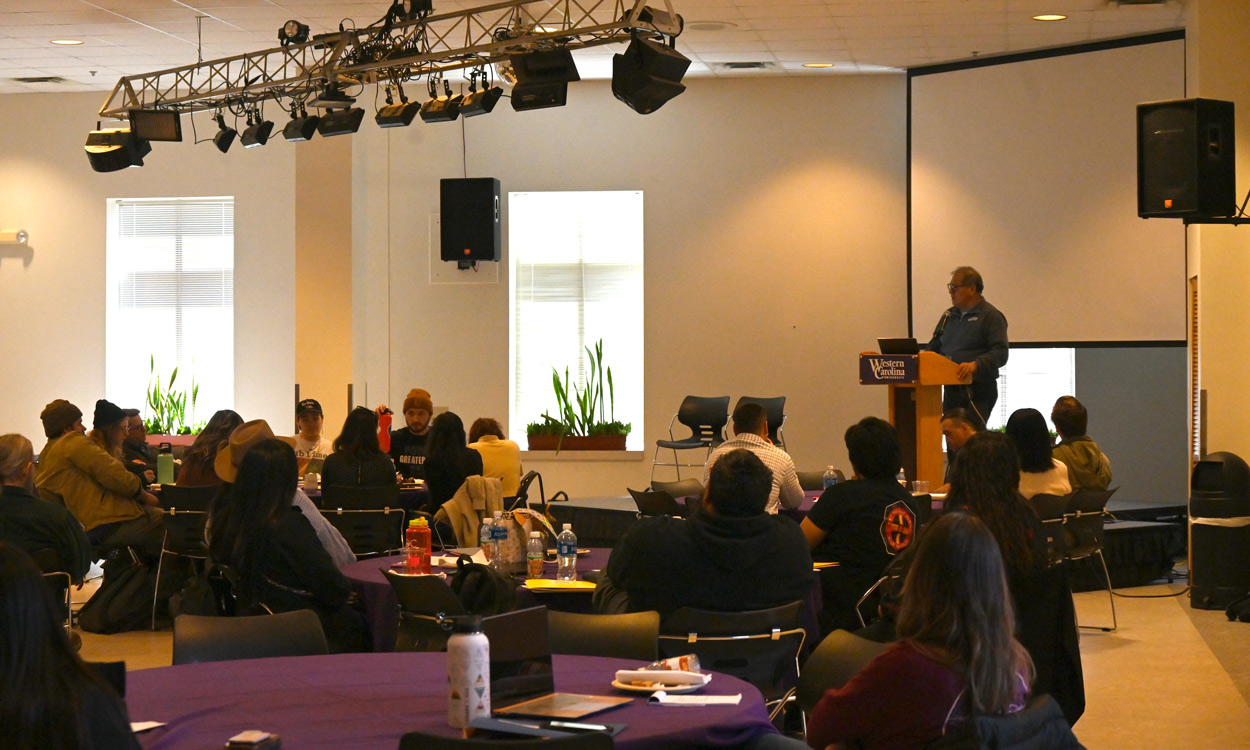Student team places top 10 in international building design competition

From left to right: Leslie Smith, Valeria Villarroel, Megan McIntosh and Hunter Cophron placed in the top 10 of the international Chartered Institute of Building Global Student Challenge design competition.
By Brooklyn Brown
A team of four Western Carolina University undergraduate students competed virtually Wednesday, April 19, in the finals of the international Chartered Institute of Building Global Student Challenge design competition.
The WCU team was one of only 10 teams selected out of 35 and the only team from the United States to advance to the finals. It was the first time WCU had ever competed in the event.
Though the team did not win the final competition, they were impressed with their performance. “It was a great experience and we learned a lot,” said Leslie Smith, the team’s interior designer. “While we would have absolutely loved to win, we feel great about having made it to the finals. We look forward to going for the win again next year."
The students were handpicked by Christopher Cox, an assistant professor in the College of Engineering and Technology. The team consists of Leslie Smith, a senior interior design major from Cullowhee; Megan McIntosh, a junior construction management major from Mount Holly; Hunter Cophron, a sophomore construction management major from Marion; and Valeria Villarroel, a junior construction management major from Waynesville.
In January, the team was tasked with drafting a building proposal for a sustainable, community centric building on campus. With only a month to create their initial proposal for an international competition based in the United Kingdom, the group felt that they were at a disadvantage.
“When we started this, we had no idea what to expect because nobody at WCU had done this before,” said McIntosh, the team’s assigned CEO of the project. “We learned about the opportunity really late, so we had less than a month to create our proposal that put us in the top 10. Other universities across the globe have this as a class. They’ve been working on this proposal for a whole semester.”

Hunter Cophron (left) and Leslie Smith.
Smith felt that the disadvantages also opened them up to new ideas. “We didn’t have any preconceived notions. We just went with our gut. It was like ‘Go big or go home,’” she said. “It helped reinforce our confidence in our abilities because to come in at sort of a disadvantage and then place in the top 10 was really exciting.”
Community and sustainability were key components of the project and the team swung big in their proposal.
“Everything is natural and as sustainable as possible, and geared towards revitalizing students in a stress-free environment. We’ve included a bowling alley, an arcade, a trampoline park, a yoga and Zen relaxation garden, solar panels and water reclamation,” Smith said. “We also have food classes, restaurants and a community garden that contributes to our eatery and organic juice bar,” McIntosh said.
The team also incorporated Cherokee cultural elements to fulfill the CIOB requirement of local sourcing. They even named their building the Kuwahi Humanities Centre. The building name comes from Kuwahi (Mullberry Place), formerly known as Clingman’s Dome, which was recently renamed in Cherokee language to acknowledge the Cherokee history of the great mountain peak.
“We needed to include our local connections, so Cherokee methodologies are incorporated throughout the project,” Smith said. “The purpose of the building itself is about replenishing the body, mind and spirit. What I learned from Cherokee history is that Kuwahi is where they would go to reconnect. That’s the spirit of our building.”

Megan McIntosh (left) and Valeria Villarroel
“The international board from the UK wanted to see incorporation of local materials and communities,” McIntosh said. “Since the Cherokee people are the indigenous people of this area, we thought the incorporation of the Cherokee culture into this building was really important. Their proposed community garden also includes corn, beans and squash, the three sister vegetables of Cherokee agriculture.”
Their proposal also adhered to the Leadership in Energy and Environmental Design standard, which is the highest rated certification for a building. The team followed the design aspects of two LEED certified buildings on campus – the Health and Human Sciences Building and Brown Hall.
“A week or so after our first presentation, we got an email in UK time, about 4 in the morning. We were all asleep and Dr. Cox sent us an email because he’s up before all of us like ‘Congrats!’ So, we woke up to that,” said Villaroel, the team’s construction manager.
“I think part of that credit goes to Dr. Cox because he selected each of us,” said Cophron, the project engineer.
“We were the underdogs, but I rooted for us,” McIntosh added. “All of us, from all our different backgrounds, came together and formed a really great team.”

